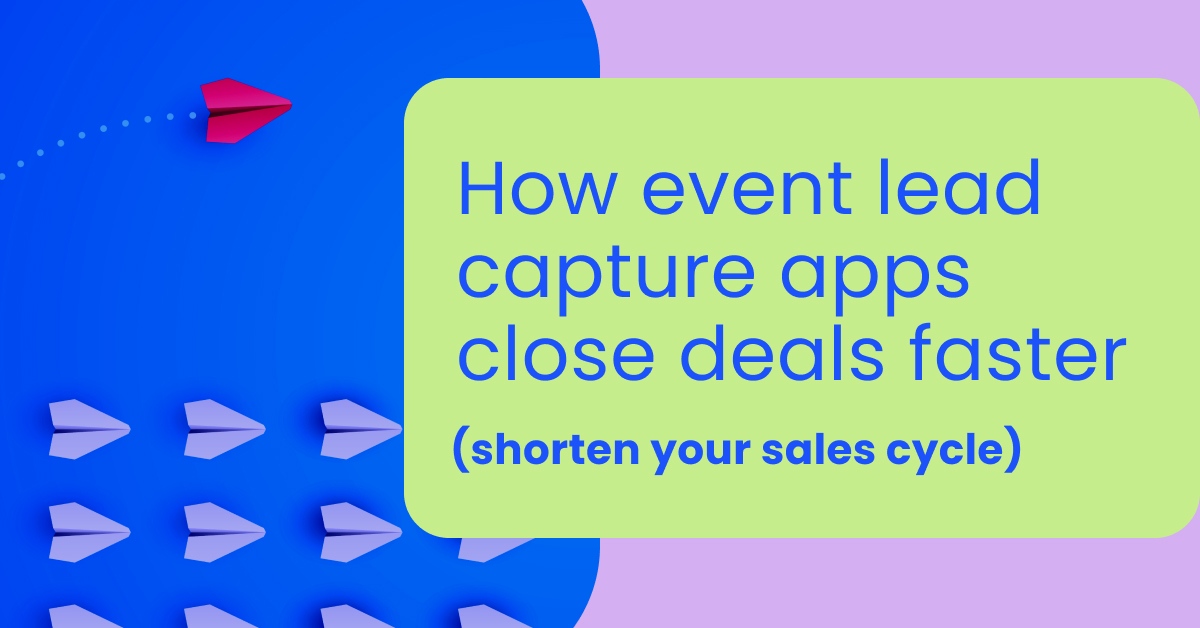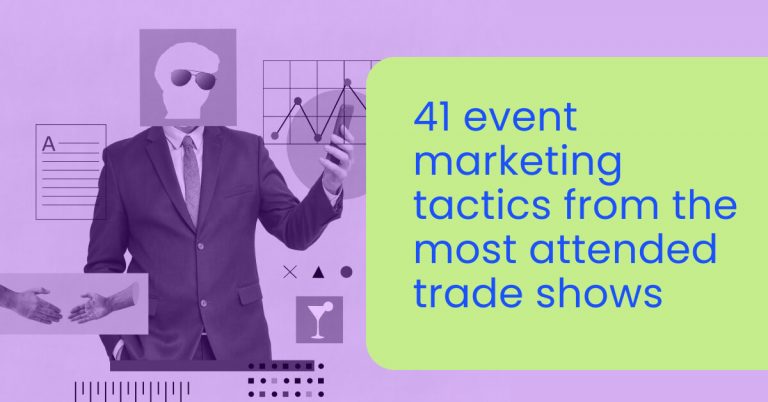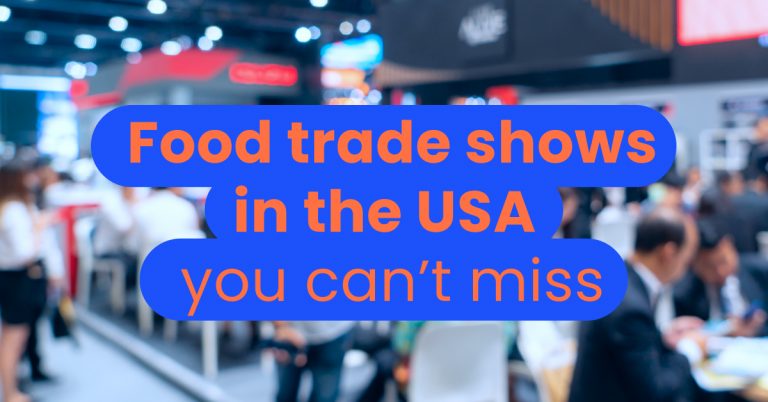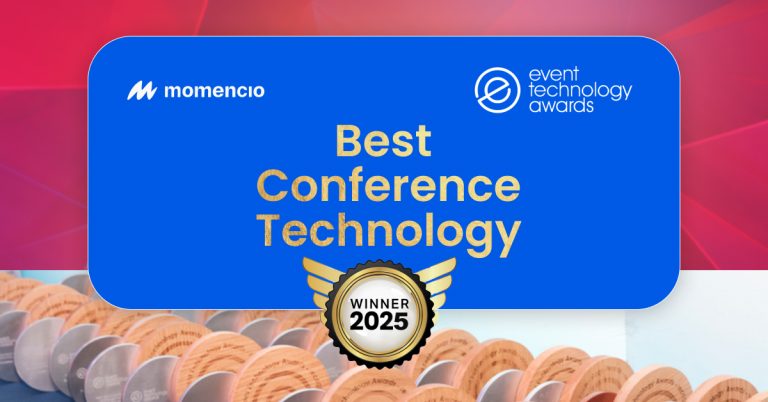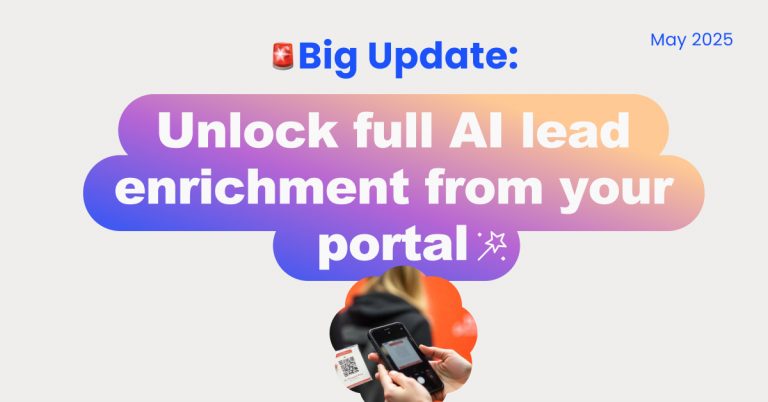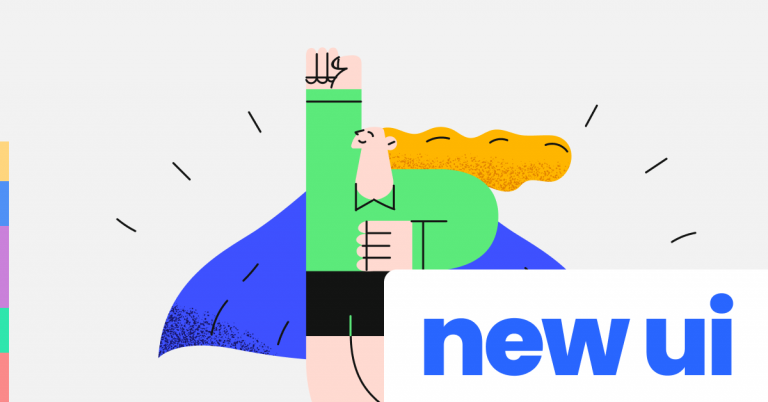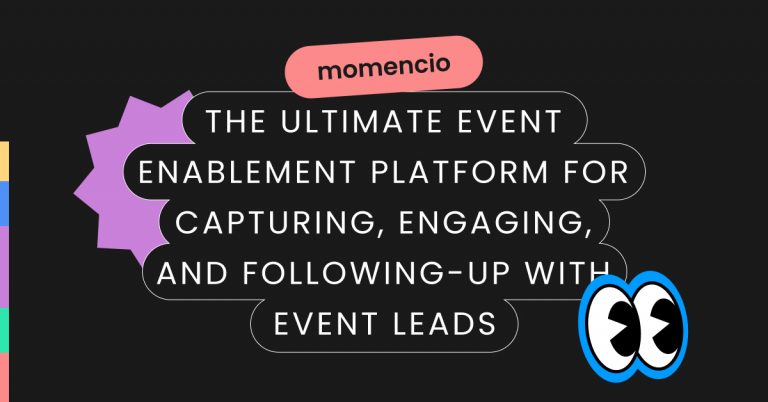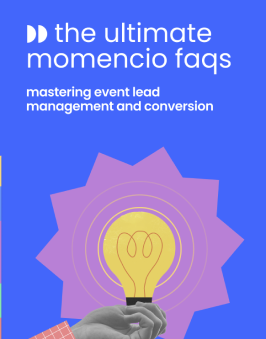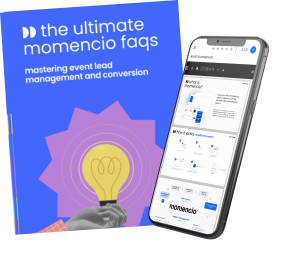Most sales teams will swear their cycle is “tight.” Fast follow-ups. Aggressive touchpoints. Deals that move. That’s the story they tell themselves.
The reality? Event leads rot. Business cards go missing. Contact records sit half-baked in CRMs. And reps who should be chasing hot buyers spend weeks chasing ghosts.
Don’t take my word for it. Research shows 78% of leads never get a single follow-up within the first week. That’s not a small leak. That’s your pipeline hemorrhaging. Every extra day between first contact and meaningful follow-up is one more day your competitor has to slip in and steal the deal.
Here’s the real villain of your sales cycle: lag.
Lag in capturing. Lag in enriching. Lag in following up. Lag in knowing who’s worth your time. That lag is killing velocity, and velocity is the only thing standing between your team and faster revenue.
Where sales cycles break after events
You don’t lose deals because your product is weak. You lose them because the process between “we met at the booth” and “we signed the contract” is a graveyard of wasted opportunities. Here’s where the cycle snaps:
1. Lost or incomplete data
Events still run on business cards, scribbled notes, and patchy badge scans. Half the time, the lead that looked promising doesn’t even make it into the system. Garbage in, garbage out.
2. Slow CRM updates
Even when the lead does get captured, it’s often dumped into a spreadsheet or uploaded to the CRM days later. By then, interest is ice cold. Prospects don’t remember you. Your reps don’t remember them. The “relationship” is dead on arrival.
3. Generic follow-ups
Let’s be honest: “Great meeting you at the show, here’s our brochure” is the fastest way to tell a prospect you don’t actually care. Generic follow-ups scream laziness, and buyers can smell it. If you’re not relevant, you’re ignored.
4. Zero visibility for sales leaders
Sales leaders think they’re driving pipeline, but after an event, they’re flying blind. No live engagement data, no prioritization signals, no clue which reps are actually working the leads. By the time reports trickle in, the quarter is already gone.
These breaks aren’t small cracks. They’re chasms. And every day your process runs like this, you’re extending your sales cycle by weeks and giving competitors the opening to cut you out of deals.
What shortening the cycle really requires
Sales leaders talk about “speed to lead” like it’s a motivational poster. But the truth is, speed isn’t about how quickly your rep can dial a phone. It’s about whether your entire system is built to eliminate lag. You can’t shorten cycles with hustle alone. You shorten them by removing friction at every stage.
Here’s what has to be in place:
1. Instant capture
If lead data isn’t in the system the moment the conversation ends, you’ve already lost. No pile of business cards, no uploads “next week.” Real cycle compression starts with instant capture at the event floor.
2. Automatic enrichment
A name and email are not enough. Reps need job titles, LinkedIn profiles, firmographics, and buying signals on day zero. Enrichment can’t be a research project — it has to be baked into capture. Otherwise your follow-up is just a shot in the dark.
3. Personalized engagement
If your first touch after the event is the same PDF you send everyone else, congratulations: you’ve just extended your sales cycle. The fastest way to move a deal forward is to show you listened — with content that reflects exactly what they cared about at the booth.
4. Real-time visibility
Sales cycles slow down when leaders can’t see what’s happening until it’s too late. If you can’t tell which leads are engaging, which reps are following up, and which deals are stalling in real time, you don’t have control. And without control, you don’t have velocity.
These four requirements aren’t “nice to have.” They’re the minimum if you want to turn events into actual pipeline instead of expensive meet-and-greets. Miss even one, and you’ll be stuck in the same bloated sales cycle that’s draining your quarter.
How event lead capture apps deliver on this
Picture the typical post-event workflow:
- A rep dumps a stack of business cards on their desk.
- Two days later, they copy names into a spreadsheet.
- Marketing “cleans” the data before uploading it into the CRM.
- Another week passes before a generic email blast goes out.
- By the time anyone follows up, the lead has forgotten the conversation — or worse, signed with a competitor.
That’s the cycle you’re living with. And it’s exactly why deals drag on.
Now, here’s the same process with an event lead capture app that actually works:
- At the booth: The rep scans the badge. The contact record is created instantly, enriched with LinkedIn, job title, company size, and email. No delays.
- Minutes later: Instead of “Great meeting you,” the rep sends a personalized microsite with the product sheet the lead asked for, a case study in their industry, and a two-minute demo clip.
- The next day: The lead reopens the microsite, clicks through the case study, and downloads the demo deck. The rep gets a nudge: this one’s heating up.
- In the CRM: The sales manager sees engagement scores climbing in real time. Instead of waiting for end-of-month reports, they know today which opportunities are alive and which are cold.
That’s not a workflow tweak. That’s cycle compression in action.
And this is where momencio stands apart:
- AI EdgeCapture™: no more incomplete data.
- LiveMicrosites: no more generic follow-ups.
- IntelliSense™: no more flying blind on engagement.
- CRM sync: no more lag between the event floor and the pipeline forecast.
It’s not “technology for technology’s sake.” It’s removing the exact choke points that make your cycle crawl.
Case in point: Cycle compression in action
At one B2B software company, the old process looked like this:
- Leads collected at a major trade show took five days to hit Salesforce.
- Follow-ups went out a week later, and they were the same PDF to everyone.
- Conversion from event lead to qualified opportunity sat at 8%.
They switched to an event lead capture app. Here’s what changed:
- Leads enriched and live in Salesforce within one hour of the booth meeting.
- Reps sent personalized microsites the same day, tied to each prospect’s interests.
- Sales managers tracked engagement in real time — they knew by day two which accounts were leaning in.
The result? Conversion from lead to opportunity climbed from 8% to 14% in one quarter. Not because reps hustled harder. Because lag was eliminated.
This is what cycle compression looks like in practice: faster data, sharper relevance, live visibility. No magic. No hype. Just process that doesn’t waste time.
Proof that speed makes or breaks deals
You don’t have to take my word for it. The numbers have been screaming this for years:
- Leads contacted within the first hour are seven times more likely to qualify compared to those contacted after two hours.
- Waiting even 24 hours drops qualification rates by 60%. That’s not a margin. That’s a free fall.
- Research showed 55% of companies take more than 5 days to respond to inbound leads. Five days. In 2025, that’s not slow. That’s negligent.
Now put that in your own pipeline context: if your event team generates 1,000 leads and you sit on them for even a day, you’ve already flushed hundreds of qualified conversations. And if you wait a week? You’re basically writing your competitor’s QBR for them.
Sales cycles don’t drag because buyers move slow. They drag because you move slow. And the data makes it clear: every hour you delay is another percentage point off your conversion rate.
Do you really need another tool?
This is the part where every sales leader rolls their eyes. “Another app? Another login? Another tool my reps won’t use?” Fair. The market is full of SaaS bloat, and your reps already hate juggling six platforms.
But here’s the truth: your CRM wasn’t built for event speed. It’s a system of record. Great at storing data. Terrible at capturing and enriching leads in real time. That’s why you end up with half-baked records that reps don’t trust and managers can’t act on.
And no, spreadsheets aren’t the answer. They’re a graveyard. Once data lands there, it’s days away from being relevant — if it ever makes it to the CRM at all.
An event lead capture app isn’t “another tool.” It’s the missing link between the floor and the funnel. Without it, your event spend is just a brand exercise. With it, every conversation actually feeds pipeline in real time.
That’s not optional. That’s survival.
The sales leader’s takeaway
Stop lying to yourself. Your reps don’t need another motivational email about “urgency.” They need a system that doesn’t bury leads in lag.
The data already proved it: every hour you wait to follow up slashes conversion. Every day you wait gives your competitor a head start. You don’t need more effort. You need fewer delays.
An event lead capture app isn’t about “modernizing your stack.” It’s about fixing the exact choke points that kill deals: slow capture, no enrichment, generic follow-ups, zero visibility. Remove those, and the cycle shrinks. Leave them in place, and you’re just setting fire to your event budget.
Here’s the bottom line: faster sales cycles aren’t built on hustle. They’re built on process. And process is exactly what separates teams that turn events into revenue from the ones that keep blaming “long cycles” quarter after quarter.
The choice is simple. Fix the system. Or watch someone else close your deals.
